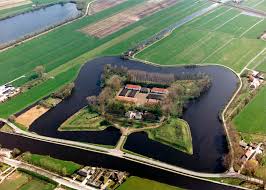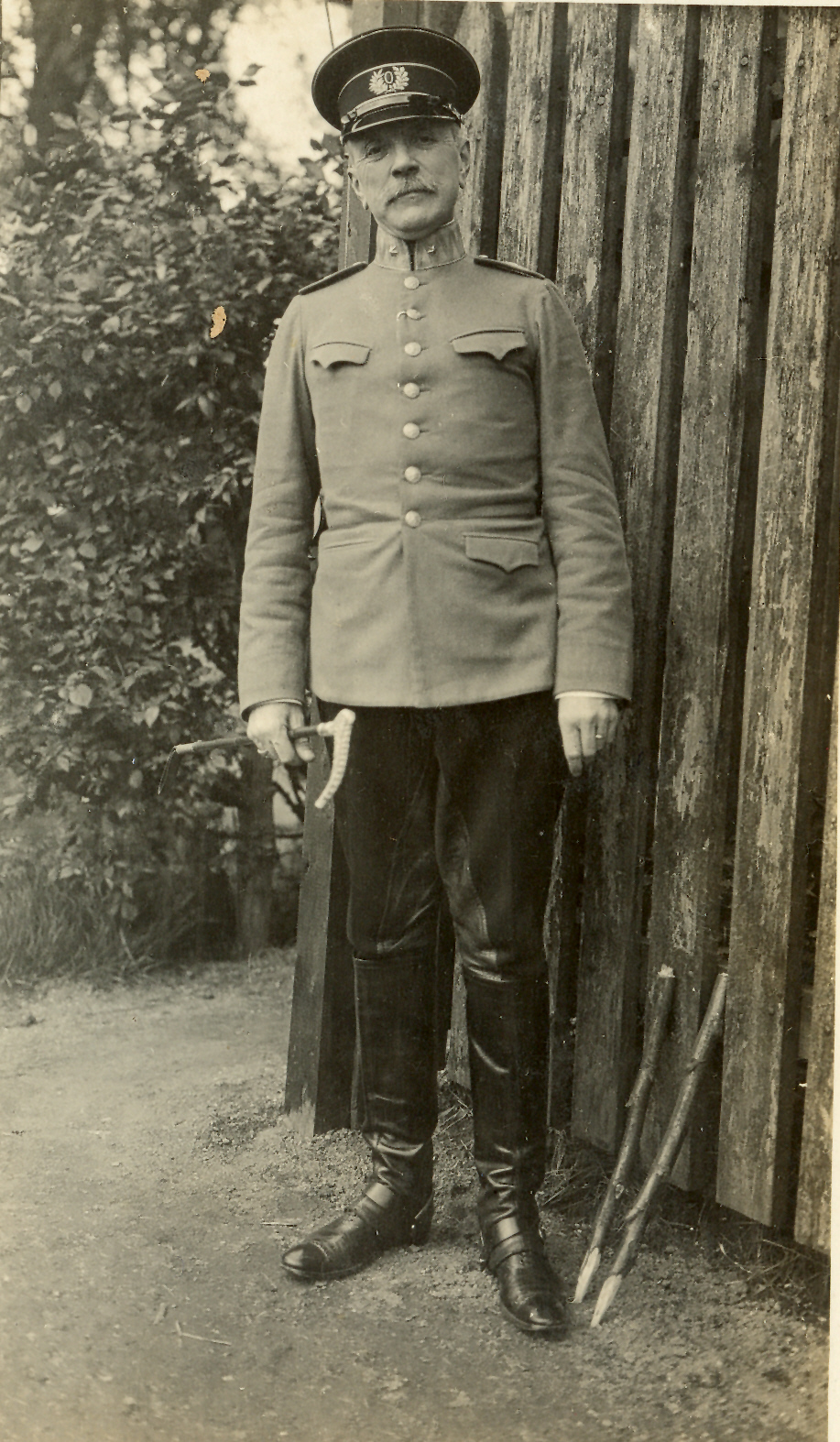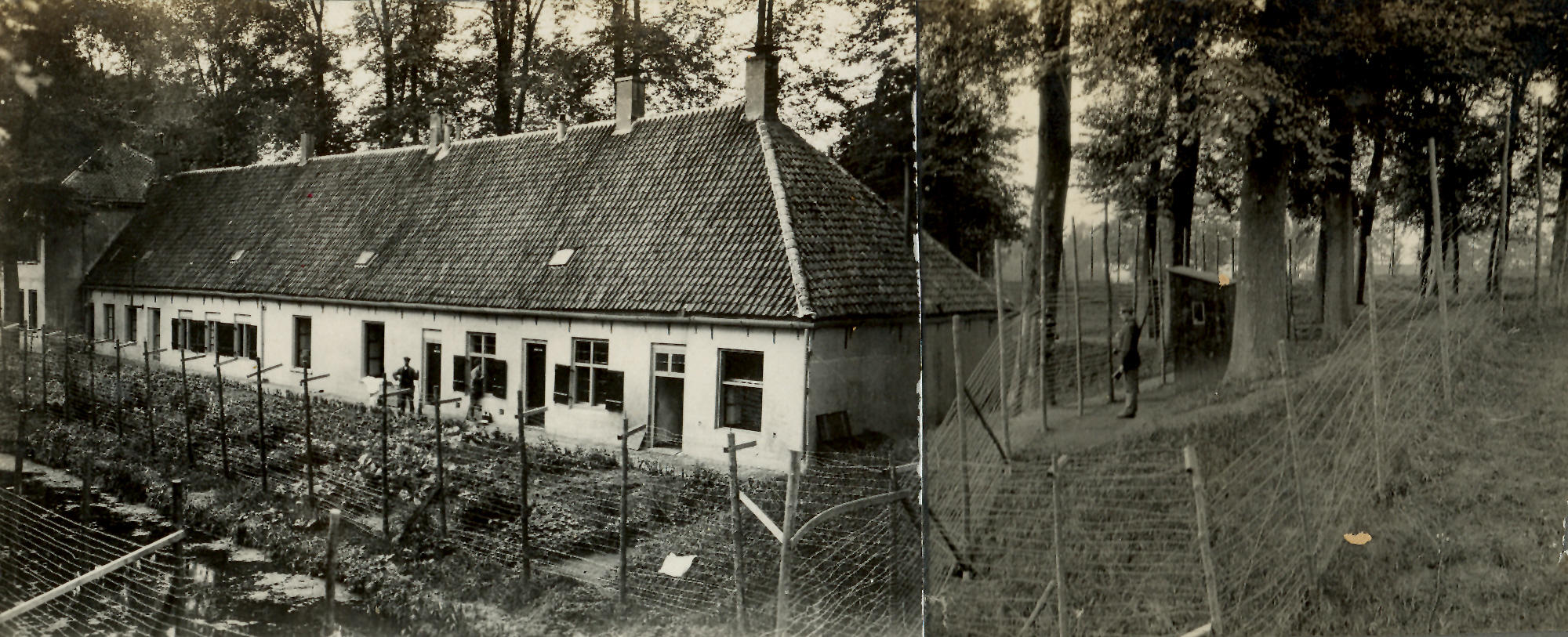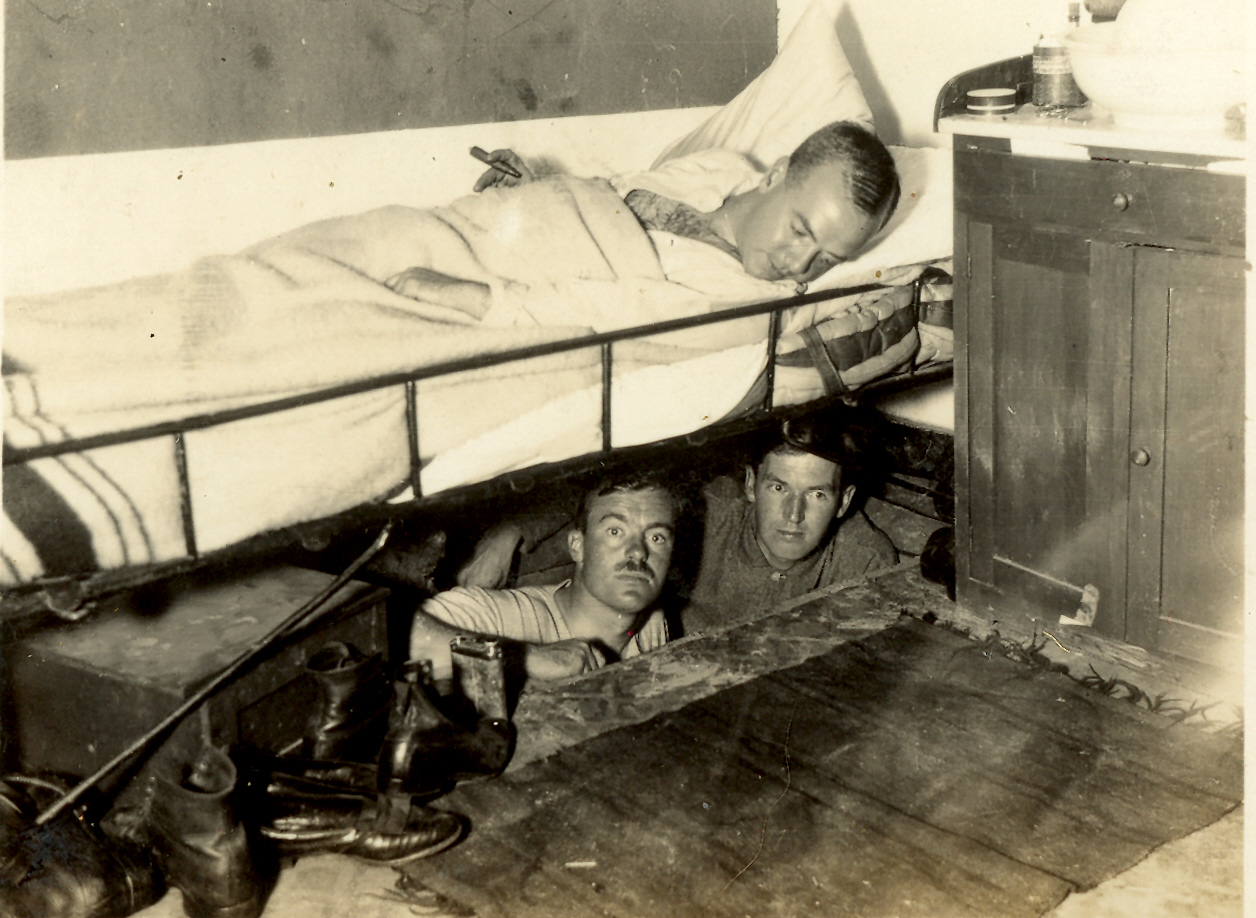Internment (officers)
version July 3 2019
As a neutral country during WW1, the Netherlands had to make sure that military of the warring countries, who had (accidently) entered the Netherlands, weren’t able to participate in the war again.- 33,105 Belgians (405 officers)
- 1,751 British (139 officers)
- 1,461 Germans (66 officers, 2 Faenrichs)
- 8 French (5 officers)
- 4 American (4 officers) soldiers
In November 1914, the British officers (from the marine brigade who had escaped from Antwerp) informed the Dutch government that the Admiralty had told them it was their duty to escape.
Both German and British officers weren housed for the moment in the locations where also the nco’s and soldiers were housed (Bergen for the Germans, Groningen for the British). In 1915 the British officers (and 1 French) were moved to Fort Wierickerschans, near Bodegraven. A fort of the (old) Dutch Waterline (1672 fame), it was transformed into an internment camp.

Fort Wierickerschans
Source: Internet

J.M. baron van Boecop
source: https://geschiedenisvanzuidholland.nl/verhalen/interneringsoord-wierickerschans-1915-1917-
Due to lack of space they were partially stationed in Bodegraven.

barracks for the guards
source: https://geschiedenisvanzuidholland.nl/verhalen/interneringsoord-wierickerschans-1915-1917-

escape tunnel
Source: https://geschiedenisvanzuidholland.nl/verhalen/interneringsoord-wierickerschans-1915-1917-
Of course, they also tried to escape. Apparently without success. The most inventive attempt was when a certain lieutenant Reiche Eisenstock hid in the trunk of a colleague going back to Germany (maybe he was too wounded to participate further in the war). The lieutenant got out the trunk near Gouda, but was caught some miles outside the city. Only 1 reference, but again, I like the story (although it is not without precedent (link). Used resources: The Netherlands during the War (Brugmans)
ch 3: military consolidation of neutrality (Tuinen, C. van), Amsterdam 1920
Verre van Vredig (Far from Peaceful)
Staarman, A
Delft, 2004
https://geschiedenisvanzuidholland.nl/verhalen/interneringsoord-wierickerschans-1915-1917-
https://www.ssew.nl/interneringsoord-fort-wierickerschans-1915-1917
https://rhcrijnstreek.nl/bronnen/lokale-historie/bodegraven-reeuwijk/bodegraven/wierickerschans/